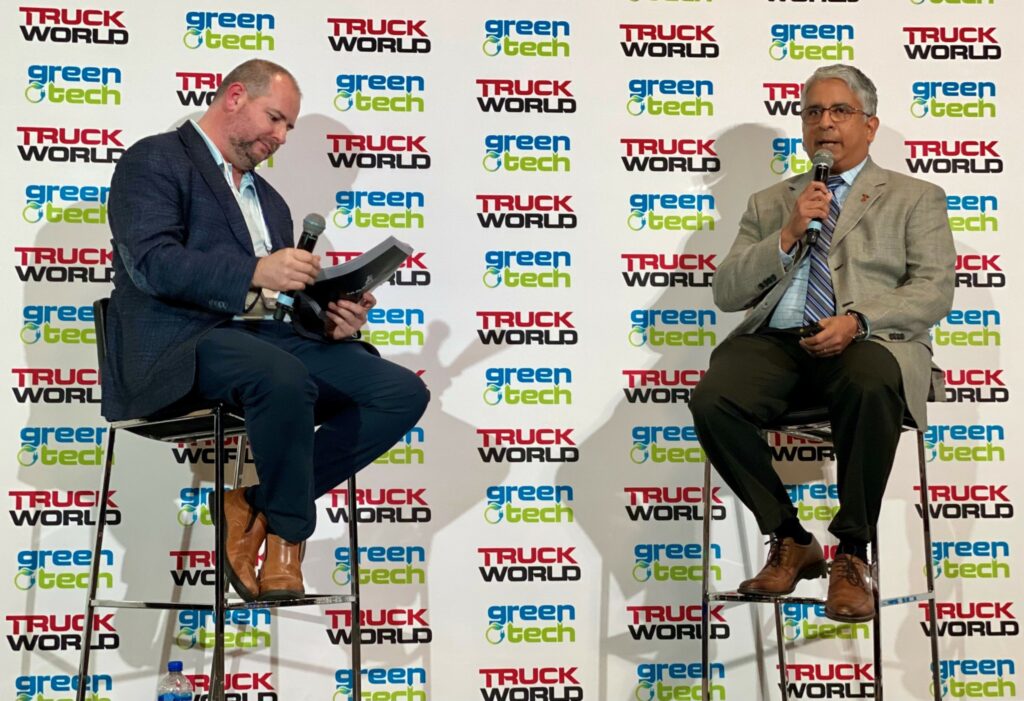All EV ecosystem factors key to adoption of technology, Mack Truck’s Kannan says
The adoption of electric vehicle technology is dependant on several factors. They include product and services offered, incentives, carbon targets and pricing, infrastructure, fossil-free energy and supply network.
It is an ecosystem where if one of them drops to zero, the adoption does not take place, said Govi Kannan, senior vice-president of global product and technology, Mack Trucks, during Truck World in Mississauga, Ont.
Kannan emphasized that one size doesn’t fit all. Transitional factors and understanding what works are important because the wrong application will not deliver good results.

Delivering an executive keynote presentation on the pathway to zero emissions and 100% fossil fuel free, he noted there is going to be room for the internal combustion engine with biofuels or renewable fuels.
Many people talk about the 100% target, but it is not likely to be that number. There will be a transition toward liquid natural gas or compressed natural gas. These are hydrocarbons that will produce carbon dioxide but may emit lesser harmful NOx or nitrogen oxides.
Refuse and regional haul applications
Kannan said battery electric technology will be used in refuse and regional haul applications. The limited range is ideal for these sectors where a similar distance is covered daily, and batteries can be charged at the end of the day.
Fuel cell electric technology is needed for longer haul vehicles, as it can provide the range needed but the internal combustion engine will not go away for some applications.
Kannan said Mack Trucks listened to its customers and introduced ElectriFy, an all-inclusive personalized usage-based business model that takes care of the truck and body, service contract, physical damage insurance, incentives and has an optional charging package.
Customers had questions about reliability of the technology and whether it would be obsolete in a couple of years. Kanan said ElectriFy offers peace of mind to customers and allows penetration of electric technology.
Distance not equal to range
An important thing to note for carriers planning to go electric is that distance is not equal to range. Kannan said factors like speed, wind resistance and temperature affect range. For example, an electric truck operating in Michigan on a cold winter day will need extra energy to keep the batteries and driver warm.
Development of electric technology is very expensive and partnerships are helping ease this burden. Kannan gave the example of Daimler Truck and Volvo Group partnering to create cellcentric – a fuel cell systems company. Volvo Group also signed an agreement with Westport Fuel Systems to reduce carbon dioxide emissions from longhaul transport.
Competitors have come together to further the advancement and adoption of technology, Kannan concluded.
Have your say
This is a moderated forum. Comments will no longer be published unless they are accompanied by a first and last name and a verifiable email address. (Today's Trucking will not publish or share the email address.) Profane language and content deemed to be libelous, racist, or threatening in nature will not be published under any circumstances.